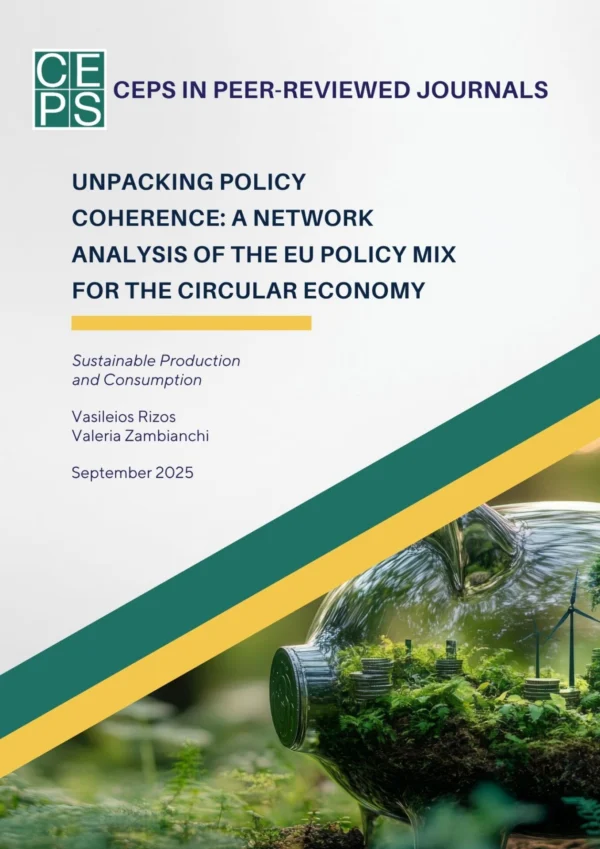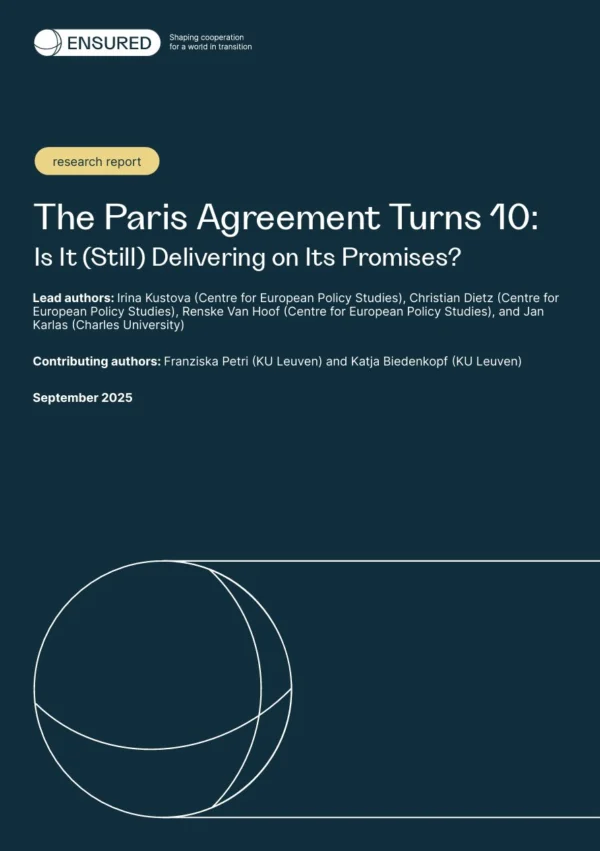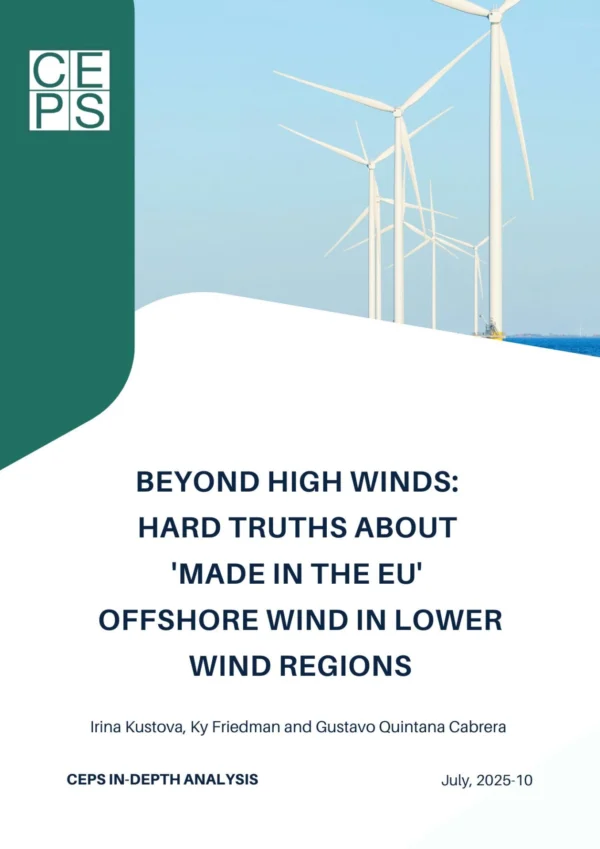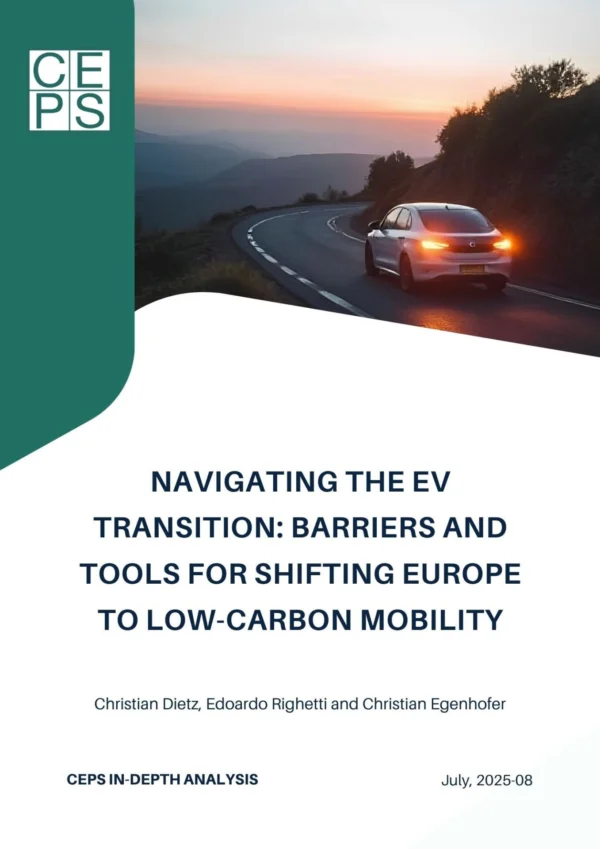This contribution offers some insights into the strategy adopted by the European Battery Alliance, which was launched in 2017, and the challenges it faces before the review of the Clean Mobility Package is published.
Author: Aurélie Faure-Schuyer
On 11 October 2017, Vice President for Energy Union Maroš Šef?ovi? launched the European Battery Alliance (EBA), aiming to spur entrepreneurs towards the manufacture of ‘made in Europe’ batteries, to be used as components in electrical vehicles. The industrial objectives underpinning the EBA extend to 2023, with a view to contributing to the 2025 and 2030 policy goals laid out in the European Commission’s Clean Mobility Package, which puts forward a set of legislative proposals aimed at sending a ‘green’ light to electro mobility.
This contribution presents this initiative, traces its origins and comments on its prospects for long-term success towards 2023 and beyond. It also speculates on the extent to which this success may hinge upon other European policy objectives.
Policy objective: Supporting the deployment of electric vehicles in the European Union
Although initially developed in parallel with a large-scale cell battery manufacturing project located in Sweden – called Northvolt – the EBA is an industrial initiative encompasses the entire value chain of battery production. This activity covers four main stages of manufacturing: production of components, cells and modules and their assembly into a battery pack. It also involves research centres, SMEs and recycling facilities. Given that the production of battery cells and modules is intensive in both raw materials and R&D, the industrial roadmap identifies no less than 80 actors in the fields of raw materials, active materials,[1] battery cells and packs, applications and battery recycling. Five core industrial projects[2] are under consideration in Sweden, Germany, Hungary and Poland, with a total annual production capacity of at least 80 GWh. France is moving closely in parallel with a non-exclusive alliance formed through Total-Saft, Solvay, Siemens and Manz.[3] Other countries, including Luxembourg and Austria, have also signalled their interest through other forms of investments.
Based on announced manufacturing capacities, the EBA will provide a solid foundation for the deployment of some 2 million battery electric vehicles (BEVs) both within and outside the EU. If the plan lives up to its expectations of building between 10 and 20 gigafactories,[4] the European Union would account for an equivalent estimated 15% share of global cell manufacturing capacity by 2026.[5] Such scale requires that large amounts of raw material, such as lithium, nickel, cobalt and graphite, present in anodes, are secured either as extracted minerals or as processed materials.[6]
Towards a sustainable access to raw materials
Besides the manufacturing capacity that the initiative has successfully promoted, the EBA intends to secure sustained access to the raw materials used in batteries. The concept of ‘sustained access’ links to the 2008 Raw Materials Initiative, and encompasses both a domestic access and an external access dimension through external trade. As for the external access, a European regulation oversees the conditions of raw materials sourcing specific to tin, tungsten, tantalum and gold.[7] In domestic access, the potential of the circular economy is being incorporated into the roadmap.[8]
In the long term, the EU’s dependence on the supply of battery raw materials would also have to be assessed, taking into account the fact the extraction of needed raw materials as well as the processes of smelting and refining are all located outside the European Union. The EU’s raw materials policy,[9] based on the assessment of critical raw materials,[10] partly addresses this issue.
The reactivation of upstream activities through enhanced exploration in some member states (Sweden and Serbia, for example) or in neighbouring regions and countries (Norway and Greenland) is certainly an option. However, it needs to be addressed in the context of a comprehensive environmental strategy based on sustainability principles. It will thus be necessary to strike a balance between sustainability policies and security of supply policies. In revisiting the EBA’s stance for a secure and sustainable access to raw materials, the EU’s contribution in terms of its domestic potential in deposits and/or through the circular economy is an important element to consider.
Removing barriers to deployment of infrastructure for recharging batteries in the EU
The future of the European Battery Alliance is closely linked with the Clean Mobility Package, as the industrial policy-led approach of the EBA complements the objectives expressed as emissions standards under the Clean Mobility Package. The success of the EBA depends on the removal of barriers to the roll-out of charging infrastructure as requested by the Directive on the deployment of alternative fuels infrastructure (2014/94/EU) (see below). National deployment plans set out the number of public and semi-public charging points that Member States are willing to achieve by 2020, 2025 and 2030 under specific required criteria linked to the number of recharging points per vehicle. These plans, submitted to the European Commission, have been incorporated in the Clean Mobility Package.[11]
Directive on the deployment of alternative fuels infrastructure (2014/94/EU) promotes access to public or semi-public battery charging points. The Directive addresses low-carbon infrastructure such that vehicles using compressed natural gas, hydrogen, or electric battery have the possibility to recharge. But its progress has been limited so far, with only two member states (Norway and Denmark) providing more than 100 recharging points for electric vehicles per 100,000 city inhabitants.[12]
Aside the deployment of physical infrastructure constituting a backbone of recharging points, norms governing the interoperability of the different points are required. For electric vehicle drivers, interoperability guarantees a single and uniform identification or payment method, based on the universal observance of open communication protocols at charging stations. Standardisation between US norms (ANSI) and those adopted in China and Europe (Cenelec) is also underway, but there are not yet any universal standards or international regulatory requirements to ensure EV fast-charger interoperability.
Departing from existing technological dependencies?
Within the EBA, different actors (energy companies, automobile suppliers, recycling groups, etc.) are advancing with different considerations, based on their perceptions of the degree of technological maturity (lithium-ion batteries vs third-generation batteries). The Alliance represents an interesting approach to foster and stimulate technological evolution in the European Union. If successful, this initiative would help the Union move away from its dependency on outdated technologies, such as the combustion engine and its associated technologies, and towards a cycle of technological development, particularly in a context in which global manufacturing competition between actors and regions is moving up the value chain (see Appendix 1 for the role of Asia in the global battery market).
For this dynamic to gather pace, an ambitious, large-scale R&D programme needs to be aligned across the road map. According to Eurobat, the Association of European Automotive and Industrial Battery Manufacturers, the industry spent €740 million on RD&I over the period 2010-15. Future efforts in R&D, of which some of them have been selected as EU-funded schemes backed by the European Investment Bank, are required.
Appendix 1. Asia and the global battery market
Asia largely dominates the global market for both Internal Combustion Engine (ICE) transportation and electrified passenger cars (Hybrids, BEVs). It accounts for 53% of passenger cars produced globally. Electric vehicle assembly lines have been scaled up in China and Korea. As it replicates the strategy that led to the development of wind mills and solar panels, China has become the largest market in the world for registered electric vehicles, surpassing the United States in 2015. Over the past two years, China tightened its grip on lithium supply thanks to the proximity of low-cost Australian rock basins and to contractual agreements to import lithium sources (spodumene) concentrate into mainland China, in order to supplement its existing resources.
Aurélie Faure-Schuyer is Researcher in the Energy and Climate Change research unit at CEPS.
CEPS Commentaries offer concise, policy-oriented insights into topical issues in European affairs. As an institution, CEPS takes no official position on questions of EU policy. The views expressed are attributable only to the author and not to any institution with which she is associated.
© CEPS 2018
[1] The active materials of a battery are the chemically active components of the two electrodes of a cell and the electrolyte between them.
[2] Equivalent to 2 million battery electric vehicles (BEVs) based on 40 GWh battery capacity.
[3] https://www.platts.com/latest-news/electric-power/london/totals-saft-joins-european-battery-alliance-with-26896561
[4] A term coined by Tesla CEO Elon Musk, gigafactories produce batteries on the scale of more than 1GWh per year. Until this year, Europe had no factories of that size.
[5] We arrive at this figure based on the following calculations: In the European Union, excluding France, we use a standard capacity of 10 GWh capacity per gigafactory, giving an EU manufacturing capacity of 80 Gwh. As for global capacities, we extrapolate existing capacities of 130 GWh to the year 2026 and add an annual addition of 50 GWh planned lithium-ion capacity.
[6] Active cathode materials are mainly lithium, nickel, cobalt, and graphite. They are forecasted to account for more than 50% of a battery cell and 40% pack cost – Roskill. Minerals, Raw materials and Metals, such as aluminium, copper, magnesium, dysprosium, are also present in other parts and components of EVs.
[8] 2015 Circular Economy Package including European Commission Action Plan – “Closing the loop – An EU action plan for the Circular Economy” – COM (2015) 614-Final
[9] Aurélie Faure-Schuyer, Christian Egenhofer, Milan Elkerbout, “Value chains based on Mineral Raw Materials – Challenges for European Policy and Industry”, CEPS Policy Insight, February 2018.
[10] Lithium, cobalt, nickel used in batteries; but, also platinum used in catalyst for the automobile industry
[11] See “Delivering on low-emission mobility: A European Union that protects the planet, empowers its consumers and defends its industry and workers”, Communication from the Commission to the European Parliament, the Council, the European Economic and Social Committee and the Committee of the Regions, COM 2017 – 675 Final, 8 November 2017
[12] See “Power to the EV: Norway spearheads Europe’s electric vehicle surge”, The Guardian, 7 February 2017.








